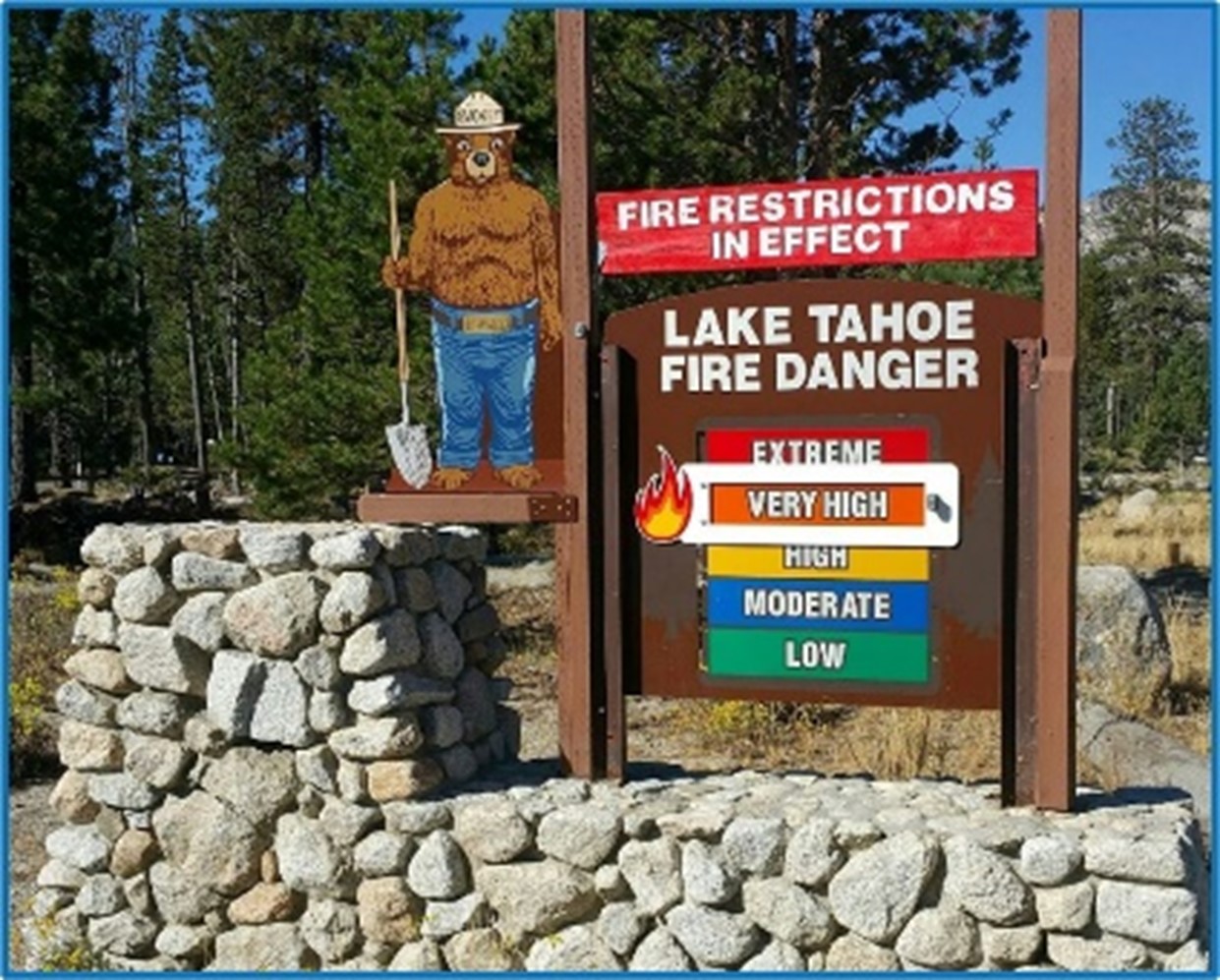Lake Tahoe Summer Fire Restrictions, Red Flag Warnings & National Fire Danger Rating System
Release Date:
Contact(s): North Lake Tahoe Fire Protection District, Tia Rancourt

LAKE TAHOE, Calif./Nev., June 28, 2024 – Summer is in full swing and so are fire restrictions in the Lake Tahoe Basin. Please “Know Before You Go” and check the fire restriction status in your area. Visit Tahoe Living With Fire to learn more and contact your local fire district for the specific fire restrictions in your area. For National Forest or State Park fire restrictions, please visit the USDA Forest Service Fire Restriction webpage or check with the respective California or Nevada state park as they can differ from local fire district restrictions.
“It only takes one thoughtless BBQ or tiki torch to potentially cause a catastrophic wildfire,” said North Tahoe Fire Protection District Chief, Ryan Sommers. “Take time to understand what the fire restrictions are where you are living or recreating so that you aren’t the cause.”
In addition to fire restrictions, the National Weather Service declares Red Flag Warnings and Fire Weather Watches to alert fire departments, fire districts, and the public about critical fire weather that could lead to an increase in wildfire activity. The type of weather conditions that can cause a watch or warning include low relative humidity, strong winds, dry vegetation, and the possibility of lightning strikes. Below is an explanation of the differences between a Fire Weather Watch and a Red Flag Warning.
- Fire Weather Watch - declared when fire weather conditions could exist in the next 12-72 hours. A watch is one level below a warning, but keep in mind, fire danger remains high.
- Red Flag Warning - declared for weather events, which may result in extreme fire behavior that may occur within the next 24 hours. A Red Flag Warning is the highest alert. During these conditions, extreme caution is urged because a simple spark can cause a major wildfire.
“A red flag warning has most of the fire protection districts and land managers holding their breath,” said Chief Sommers. “We know that more than 90 percent of fires are caused by humans, so it’s important people know when to be extra careful.”
In addition to Red Flag Warnings and Fire Weather Watches, the National Fire Danger Rating System (NFDRS) allows fire managers to estimate the daily fire danger for a given area. NFDRS uses five different color-coded adjective ratings to help the public understand fire potential. These signs are placed in key locations to alert the public about current fire danger and are most often associated with roadside Smokey Bear signs. Below is an explanation of the different fire danger adjective ratings.
- Fire Danger Level: Low (Green)
Vegetation that can feed a wildfire does not ignite easily from small embers, but a more intense heat source, such as lightning, may start fires in duff or dry rotten wood. Fires in open, dry grasslands may burn easily, but most wood fires will spread slowly, creeping or smoldering. Control of fires is generally easy. - Fire Danger Level: Moderate (Blue)
Fires can start from most accidental causes, but the number of fire starts is typically low. If a fire starts in an open, dry grassland, it will burn and spread quickly on windy days. Most wood fires will spread slowly to moderately. Average fire intensity will be moderate except in heavy concentrations of vegetation, which may burn hot. Fires are still not likely to become serious and are often easy to control. - Fire Danger Level: High (Yellow)
Fires can start easily from most causes and small vegetation (such as grasses and needles) will ignite readily. Unattended campfires and brush fires are likely to escape. Fires will spread easily, with some areas of high intensity burning on slopes or concentrated vegetation. Fires can become serious and difficult to control unless they are put out while small. - Fire Danger Level: Very High (Orange)
Fires will start easily from most causes. The fires will spread rapidly and have a quick increase in intensity, right after ignition. Small fires can quickly become large fires and exhibit extreme fire behavior, such as long-distance spotting and fire whorls. These fires can be difficult to control and will often become much larger and longer-lasting fires. - Fire Danger Level: Extreme (Red)
Fires of all types start quickly and burn intensely. All fires are potentially serious and can spread very quickly with intense burning. Small fires become big fires much faster than at the "very high" level. Spot fires are probable, with long-distance spotting likely. These fires are very difficult to fight and may become very dangerous and often last for several days, weeks or months.
It's vital that everyone in the Lake Tahoe Basin educates themselves about wildfire prevention and preparedness. Share learned information with family and friends, and always take steps to prevent a wildfire from sparking. Together, we can prevent the next wildfire. For links to Red Flag Warnings, Fire Danger Ratings, and tips for preventing and learning to live with wildfire, visit TahoeLivingWithFire.
###

About the Tahoe Fire and Fuels Team
The Tahoe Fire and Fuels Team (TFFT) consists of representatives of Tahoe Basin fire agencies, CAL FIRE, Nevada Division of Forestry and related state agencies, University of California and Nevada Cooperative Extensions, the Tahoe Regional Planning Agency, the USDA Forest Service, conservation districts from both states, the California Tahoe Conservancy, and the Lahontan Regional Water Quality Control Board. Our Mission is to protect lives, property, and the environment within the Lake Tahoe Basin from wildfire by implementing prioritized fuels reduction projects and engaging the public in becoming a Fire Adapted Community.
For more information, visit https://tahoe.livingwithfire.info/about/.

